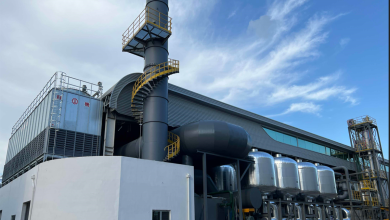Understanding Aquatic Bioassay Testing: A Vital Tool for Environmental SafetyIntroduction

Aquatic bioassay testing plays a crucial role in assessing the impact of various substances on aquatic ecosystems. By evaluating the effects of chemicals, pollutants, and other potential hazards on aquatic organisms, these tests help in maintaining the health and sustainability of our water bodies. This article delves into the fundamentals of aquatic bioassay testing, its methodologies, significance, and applications.
What is Aquatic Bioassay Testing?
Aquatic bioassay testing involves the use of living organisms to evaluate the toxicity or biological impact of substances in water. These organisms, which can include fish, invertebrates, algae, and other microorganisms, serve as indicators of the health of aquatic environments. The tests can be conducted in both laboratory and field settings, providing valuable data on how different contaminants affect aquatic life.
Key Methodologies in Aquatic Bioassay Testing
- Static Tests: In static bioassays, organisms are exposed to a test substance in a controlled environment without any change in the test medium. This method is simple and cost-effective but may not accurately reflect real-world conditions where water flow and pollutant dilution occur.
- Flow-through Tests: These tests involve a continuous flow of water through the test chambers, providing a more realistic simulation of natural water bodies. This method helps in maintaining constant exposure levels and reducing the buildup of waste products.
- Renewal Tests: In renewal bioassays, the test medium is periodically replaced with fresh solution, maintaining stable conditions for the test organisms. This method combines the advantages of static and flow-through tests by providing controlled exposure while mitigating waste accumulation.
- Toxicity Identification and Evaluation (TIE): TIE procedures aim to identify specific toxicants responsible for observed effects. By fractionating and manipulating the test samples, researchers can pinpoint the substances causing toxicity and develop targeted mitigation strategies.
Importance of Aquatic Bioassay Testing
- Environmental Protection: Aquatic bioassay testing is essential for protecting aquatic ecosystems from harmful pollutants. By identifying toxic substances and their concentrations, regulators can implement measures to prevent contamination and preserve water quality.
- Regulatory Compliance: Governments and environmental agencies worldwide mandate aquatic bioassay testing to ensure that industries comply with environmental regulations. These tests are critical for approving new chemicals, assessing wastewater discharges, and monitoring environmental remediation efforts.
- Risk Assessment: Bioassays provide valuable data for ecological risk assessments, helping to predict the potential impact of pollutants on aquatic life. This information guides decision-making processes for environmental management and conservation.
- Public Health: Since water bodies are often sources of drinking water and recreation, ensuring their safety is vital for public health. Aquatic bioassay testing helps prevent human exposure to hazardous substances through contaminated water.
Applications of Aquatic Bioassay Testing
- Industrial Discharges: Industries use aquatic bioassays to test the toxicity of their effluents before releasing them into water bodies. This helps in identifying harmful substances and ensuring that discharge limits are not exceeded.
- Pesticide Evaluation: Pesticides can have unintended effects on non-target aquatic organisms. Bioassay tests are used to assess the environmental impact of these chemicals, guiding safe application practices and regulatory standards.
- Pharmaceuticals and Personal Care Products: Many pharmaceuticals and personal care products end up in water systems, potentially affecting aquatic life. Bioassay testing helps in understanding the ecological impact of these substances and informs regulations to limit their presence in the environment.
- Environmental Monitoring: Regular bioassay testing is conducted as part of environmental monitoring programs to detect changes in water quality over time. This ongoing assessment helps in early identification of pollution sources and implementation of corrective measures.
Conclusion
Aquatic bioassay testing is a vital tool in the arsenal of environmental science, providing critical insights into the impact of various substances on aquatic ecosystems. Through meticulous testing and analysis, it ensures the protection of water bodies, compliance with environmental regulations, and the safeguarding of public health. As our understanding of aquatic ecosystems continues to evolve, the role of bioassay testing in preserving the delicate balance of these environments becomes increasingly important.



